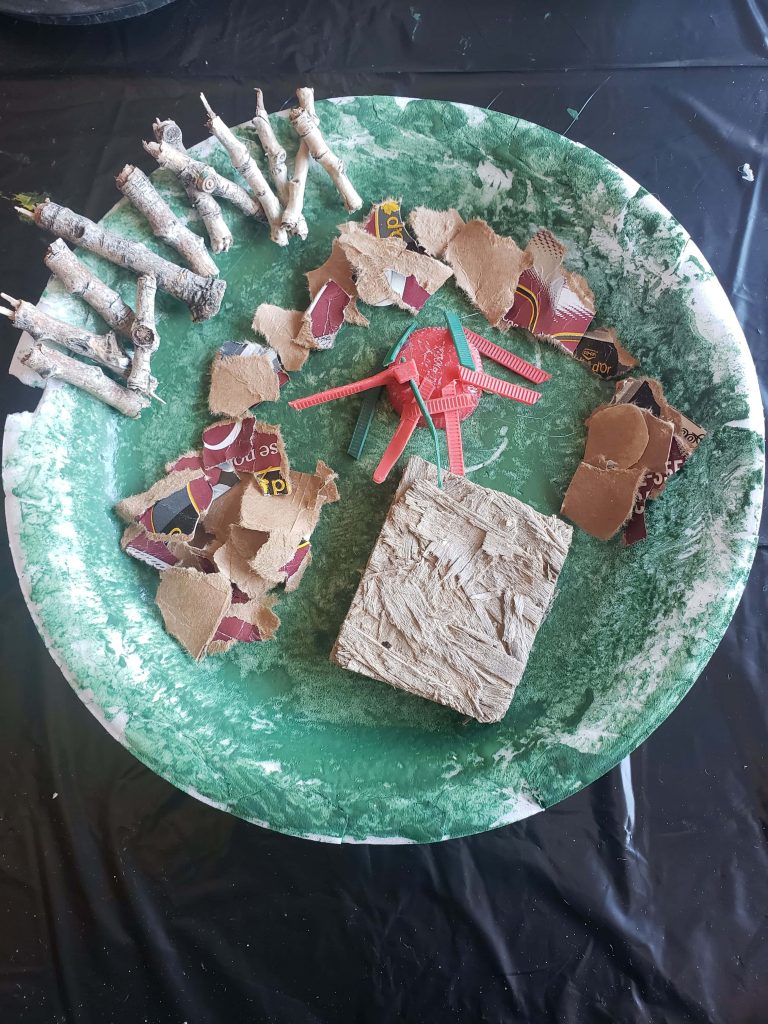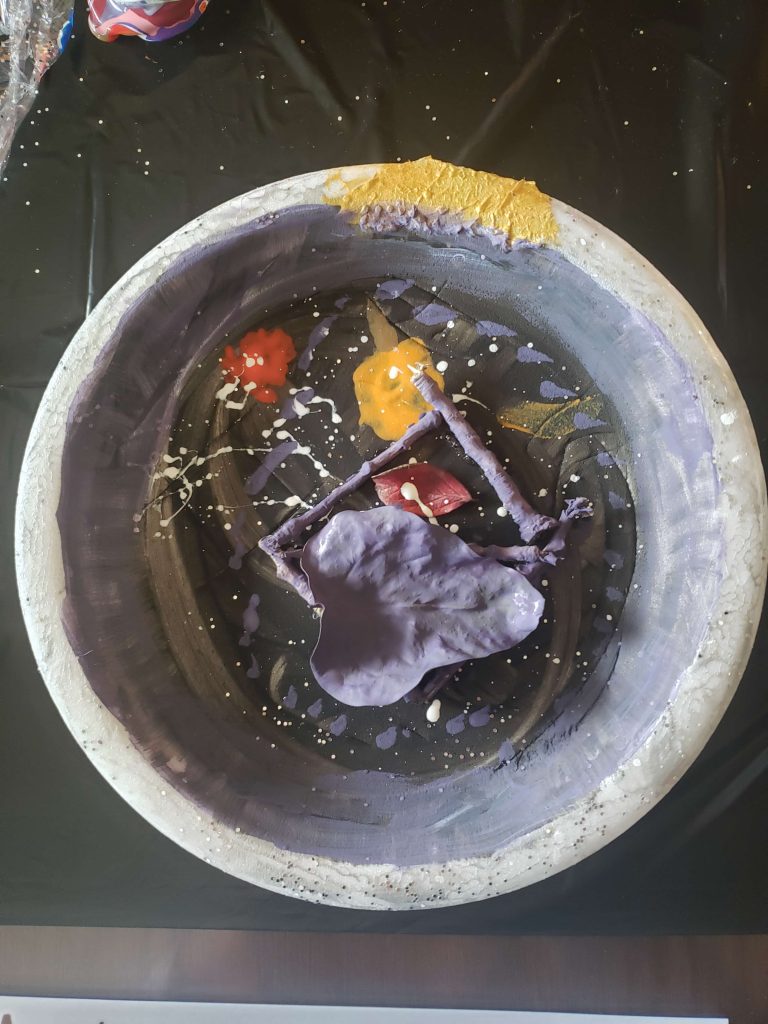Junk Art Creation
For my first process journal, I chose to practice land-based arts education by creating a piece using junk.

My Artistic Process
I am currently watching my boyfriend’s eight-year-old sister because she is sick and cannot be at school. So, I decided that we could both make our own land-based art. We began by walking around outside and we talked about what we saw, heard, felt, smelled, and tasted. When we were outside I noticed that there were a lot of leaves in the yard and most of the trees were empty. I also saw that her dad had a pile of junk piled up outside the door of his shop. In the pile were empty WD-40 cans, zip ties, pieces of plywood, pop bottle caps, and many other things. I decided to grab a few things from the pile to repurpose them. When we were outside I also grabbed a twig that had fallen to the ground. After about fifteen minutes I decided I wanted to represent what I saw outside using the junk I found in the pile and some natural materials.
When we came back inside we gathered a few materials that we could use.
For my junk art I used:
Styrofoam Plate: With our lunch that day we had left over pumpkin pie and we used Styrofoam plates, so I decided to use my plate as a canvas.
Green Acrylic Paint: I used the green acrylic paint to resemble the grass outside.
Plywood: I found a small piece of plywood in the pile outside and hot glued it to the plate. It is to resemble the shop.
Cardboard Box: I also found this box in the pile outside. Since the cardboard box was brown and burgundy I decided to use it to represent the leaves on the ground.
Coke Bottle Cap & Zip Ties: I found these in the pile outside. I though it was fitting to use them to represent the junk pile.
Twig: I broke the twig I found on the ground into pieces and glued it to the plate. The twig is to represent the trees I saw outside.
What did I learn from using the materials?
I learned that anything can be used to make art. The biggest takeaway for me from this assignment is that we can make art out of anything and use anything to inspire us. I liked the simplicity of going outside and picking up a few twigs and leaves and creating something different from it.
Classroom Applications
It was helpful to do this assignment with a child that is the age this type of activity is very well suited for because it gave me some ideas of how I could improve the activity and what students would like about it. I appreciated that we could both discuss our knowledge about the environment and apply it to what we made together. When we were each making our junk art we talked about how it was cool that we could use garbage to make art. Raya had a lot of fun doing this activity.
When Raya was making her junk art she was able to express her individual perspective and what we experienced outside. In her piece, she decided to paint the leaves and explained that the colors she painted them reminded her of fall and Halloween. From Raya’s experience, I know that this activity is process based and allows students to experiment.

I believe in allowing students to express their own individuality and experiences in classroom activities and this activity allows them to do so.
How I would incorporate this activity into the classroom:
I think that this activity aligns well with the Grade 3 Saskatchewan Science Curriculum. For this reason I would use this activity to supplement both a science and art class. It would be great to start off by having a lesson that discusses the importance of recycling, reducing and reusing. After the lesson we could go outside for a reflection and complete the activity. Instead of having students pick up garbage from outside I would ask them to bring clean trash from home. I would also encourage them to grab natural materials that could be repurposed from outside.